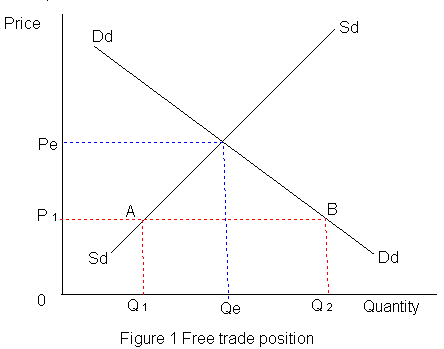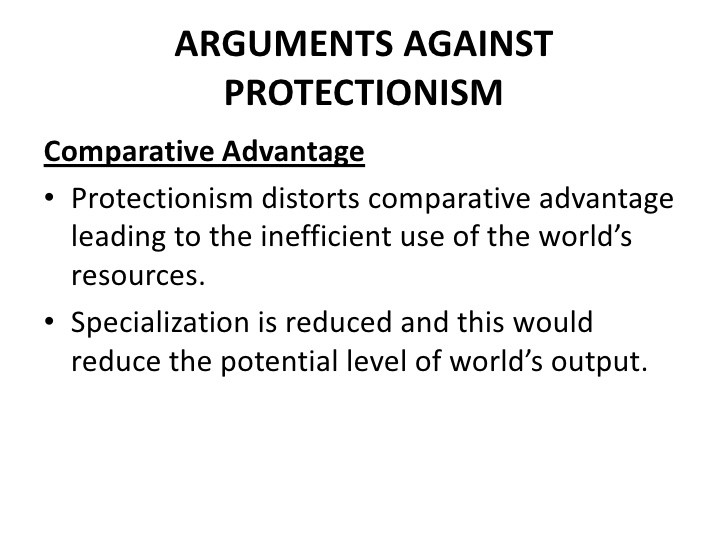HSC Online Free trade and protection advantages and disadvantages of free trade
Post on: 16 Март, 2015 No Comment

Outcomes
applies appropriate terminology, concepts and theories in contemporary and hypothetical economic contexts.
Overview
Every day Australia and Australians benefit from trade. With a population of only 22 million people, trade opens up a global market of more than six billion. Australia has a surplus of resources so we can sell the surplus to other countries and use the export dollars to buy other goods and services from overseas. People all around the world are eating Australian food, drinking our wine, using computers with Australian software and riding in Australian fast ferries.
This tutorial introduces the concept of free trade and examines the advantages and disadvantages for trading nations.Whilst many economists and organisations espouse the benefits of free trade, some groups oppose free trade and see it as disadvantageous to many people, particularly in developing countries, where local producers and employees are vulnerable to exploitation. These groups promote the idea of fair trade you can research this concept by going to the websites listed under the section More.
Content
Advantages of free trade
Free trade occurs when there are no artificial barriers put in place by governments to restrict the flow of goods and services between trading nations.
When trade barriers, such as tariffs and subsidies are put in place, they protect domestic producers from international competition and redirect, rather than create trade flows.
Increased production
Free trade enables countries to specialise in the production of those commodities in which they have a comparative advantage .
With specialisation countries are able to take advantage of efficiencies generated from economies of scale and increased output.
International trade increases the size of a firms market, resulting in lower average costs and increased productivity, ultimately leading to increased production.
Production efficiencies
Free trade improves the efficiency of resource allocation. The more efficient use of resources leads to higher productivity and increasing total domestic output of goods and services.
Increased competition promotes innovative production methods, the use of new technology, marketing and distribution methods.
Benefits to consumers
Consumers benefit in the domestic economy as they can now obtain a greater variety of goods and services.
The increased competition ensures goods and services, as well as inputs, are supplied at the lowest prices. For example in Australia imported motor vehicles would cost 35% more if the 1998 tariff levels still applied. Clothing and footwear would also cost around 24% more.
Foreign exchange gains
When Australia sells exports overseas it receives hard currency from the countries that buy the goods. This money is then used to pay for imports such as electrical equipment and cars that are produced more cheaply overseas.
Employment
Trade liberalisation creates losers and winners as resources move to more productive areas of the economy. Employment will increase in exporting industries and workers will be displaced as import competing industries fold (close down) in the competitive environment. With free trade many jobs have been created in Australia, especially in manufacturing and service industries, which can absorb the unemployment created through restructuring as firms close down or downsize their workforce. When tariffs were increased substantially in the period 19741984 for textiles and footwear — employment in the sector actually fell by 50 000, adding to overall unemployment.
Economic growth
The countries involved in free trade experience rising living standards, increased real incomes and higher rates of economic growth. This is created by more competitive industries, increased productivity, efficiency and production levels.
Disadvantages of free trade
Although free trade has benefits, there are a number of arguments put forward by lobby groups and protestors who oppose free trade and trade liberalisation. These include:
- With the removal of trade barriers, structural unemployment may occur in the short term. This can impact upon large numbers of workers, their families and local economies. Often it can be difficult for these workers to find employment in growth industries and government assistance is necessary.
- Increased domestic economic instability from international trade cycles, as economies become dependent on global markets. This means that businesses, employees and consumers are more vulnerable to downturns in the economies of our trading partners, eg. Recession in the USA leads to decreased demand for Australian exports, leading to falling export incomes, lower GDP, lower incomes, lower domestic demand and rising unemployment.
- International markets are not a level playing field as countries with surplus products may dump them on world markets at below cost. Some efficient industries may find it difficult to compete for long periods under such conditions. Further, countries whose economies are largely agricultural face unfavourable terms of trade (ratio of export prices to import prices) whereby their export income is much smaller than the import payments they make for high value added imports, leading to large CADs and subsequently large foreign debt levels.
- Developing or new industries may find it difficult to become established in a competitive environment with no short-term protection policies by governments, according to the infant industries argument. It is difficult to develop economies of scale in the face of competition from large foreign TNCs. This can be applied to infant industries or infant economies (developing economies).

- Free trade can lead to pollution and other environmental problems as companies fail to include these costs in the price of goods in trying to compete with companies operating under weaker environmental legislation in some countries.
- Pressure to increase protection during the GFC
During the global financial crisis and recession of 2008-2009, the impact of falling employment meant that protection pressures started to rise in many countries. In New South Wales, for example, the state government was criticised for purchasing imported uniforms for police and firefighters at cheaper prices rather than purchasing Australian made uniforms from Australian companies. Similar pressures were faced by governments in the United States, Britain and other European countries.
How Australia has benefitted from free trade
- Over the 2000s Australia’s ratios of exports and imports to GDP have each risen every year. Australia is an open economy, the size of its import and export sectors being greater than 20% of Gross Domestic Product. Australia is one of the countries that has benefitted most from rising international trade. It bought imported goods more cheaply than they could be made in Australia and sold exports overseas that commanded rising prices because they were in international demand.
Source: Department of Foreign Affairs and Trade
 
Some current developments in Free Trade Agreements in Australia














